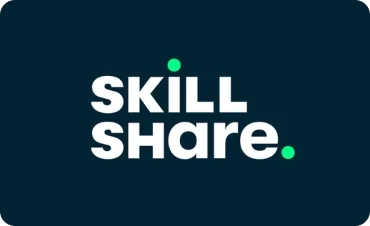When you enroll through our links, we may earn a small commission—at no extra cost to you. This helps keep our platform free and inspires us to add more value.

Digital painting with Krita 5 intermediate level
Unlock creativity with Skillshare! Learn acrylic painting, AI writing, graphic design, and photography.

This Course Includes
 skillshare
skillshare 0 (0 reviews )
0 (0 reviews ) 6 hours 49 minutes
6 hours 49 minutes  english
english Online - Self Paced
Online - Self Paced course
course SkillShare
SkillShare
About Digital painting with Krita 5 intermediate level
Introduction
Exercise files and other information
UI customization and custom shortcuts
Basic selection techniques
Adding and subtracting selection
Global selection mask
Raster vs Vector selection
Selection transformation
Contiguous and Similar selection
Selection tools UI changes (Krita 5.1)
Select opaque
Selection mask
Selection operations
Anti aliasing
Raster versus Vector
Vector implementation in Krita
Vector transformation
Vector colors
Stroke appearance
Vector graphics management
Primitive shapes
Vector elements
Vector element types
Vector editing
Align, Distribute, and Spacing
Logical operations
Bezier curve tools
Vector drawing exercises
The basics of Filter
Filter layer
Filter mask
Invert, HSV, Color balance, and Dodge
Levels and Curve
G’Mic filters
Transparency mask
Alpha channel on Filter
Transform tool and Transform mask
Strawberry house project preparation
Reference images and sketching
Midground base colors
Background and Foreground base colors
Creating the small plants
Background plants
Foreground plants
Main shadow
The leaves' shadows
Ambient occlusion
Finishing the background
Finishing the foreground
Adding textures
Highlight colors
Reflected colors and sky color
Paint over and Filter
Gradient tool
Special gradient
Stop gradient
Segmented gradient
Gradient Map filter
Robot warrior project preparation
Creating vector line art
Refining the line art
Adding background and shading preparation
Shading and Highlight
Coloring with Gradient Map
Lighting effect
Reflection and glow effect
Line art coloring
What You Will Learn?
- "Krita" is a graphic application comparable to Photoshop. But unlike Photoshop, Krita is free and open-source software. So, you don't need to pay anything to download and use it. Another thing that makes Krita different from Photoshop, is that Krita is more focused on digital painting. That is why in Krita, you can find many features related to digital painting that do not exist in Photoshop. If you need software for drawing or creating illustrations, then Krita will make you feel right at home..
- If you want to master Krita quickly and easily, then -in sha Allah- this online course is the best solution for you. Please note that this online course is the continuation of the basic-level course that was released earlier. To ensure you can follow the course without problems, it's recommended that you take the basic-level course first, before taking this one..
- What will you learn?.
- In this course, you will learn advanced selection techniques. Then learn Vector Graphics techniques in Krita. From making basic primitive objects, to being able to create custom complex shapes. You will also learn the ins and outs of “Filter” and “Mask” in Krita. We will discuss various filters such as "HSV", "Levels", "Color Balance", and so on. Including how to access hundreds of different “G'Mic filters”. Then, you will also learn the "Gradient" feature in detail. From the process of creating gradient presets, editing the gradient colors, until applying gradients using various methods..
- After we learn the techniques, we will put them into practice by creating two different illustrations from start to finish. These two illustrations have something in common, that is, they both use the Vector technique combined with the Raster technique. But the way Vectors are used in each of these illustrations is very different. In the first illustration, where we will create a strawberry-shaped house, vector graphics are used as the base colors. Raster techniques are then used to add shadows, highlights, textures, and so on. Whereas in the second illustration, where we will draw a robot fighter character or "robot warrior", Vector graphics are used to create outline or "line art". For the coloring process, we will explore a different technique. That is, we will start with defining shading and highlight in grayscale. Then we add colors to it using the “gradient map” filter. And after that, we apply various raster techniques to add lighting effects and finalize the illustration..
- There are still many things that you will learn from this course. It is impossible to explain all of them in this short text description. Please refer to the curriculum section if you want to learn more..
- So, JOIN NOW! And take your skill further to the next level..